Early Intervention Every Day!
Early Intervention Every Day!
Embedding Activities in Daily Routines for Young Children and Their Families
by
Merle J. Crawford, M.S., OTR/L, BCBA, CIMI
and
Barbara Weber, M.S., CCC-SLP, BCBA
Paul H. Brookes Publishing Co.
Post Office Box 10624
Baltimore, Maryland 21285-0624
USA
www.brookespublishing.com
Copyright 2014 by Paul H. Brookes Publishing Co., Inc.
All rights reserved.
Paul H. Brookes Publishing Co. is a registered trademark of
Paul H. Brookes Publishing Co., Inc.
Typeset by Cenveo Publisher Services, Columbia, Maryland.
Manufactured in the United States by
Bradford & Bigelow, Inc., Newburyport, Massachusetts.
The individuals described in this book are composites or real people whose situations are masked and are based on the authors experiences. In all instances, names and identifying details have been changed to protect confidentiality.
Cover photos iStockphoto.com/oksun70, iStockphoto.com/InkkStudios, iStockphoto.com/Nick_Thompson, iStockphoto.com/SolStock, and iStockphoto.com/akurtz. Other photos are used by permission of the individuals pictured and/or their parents/guardians.
Clip art 2013 Jupiterimages Corporation.
Library of Congress Cataloging-in-Publication Data
Crawford, Merle J.
Early Intervention Every Day! : embedding activities in daily routines for young children and their families / by Merle J. Crawford, M.S., OTR/L, BCBA, and Barbara Weber, M.S., CCC-SLP, BCBA.
pages cm
Includes bibliographical references and index.
ISBN-13: 978-1-59857-276-6 (alk. paper)978-1-59857-574-3 (electronic)
ISBN-10: 1-59857-276-8 (alk. paper)1-59857-574-0 (electronic)
1. Children with disabilitiesServices forUnited States. 2. Children with disabilitiesEducationUnited States. 3. Early childhood educationUnited States. I. Weber, Barbara, 1956 II. Title.
[DNLM: 1. Comprehensive Health Care. 2. Disabled Children. 3. Delivery of Health Care.
HV888.5.C73 2013
362.404808320973dc23 |
2013018059
|
British Library Cataloguing in Publication data are available from the British Library.
Version 1.0

Contents

About the Authors
Merle J. Crawford, M.S., OTR/L, BCBA, CIMI, is an occupational therapist who has a private practice in central Pennsylvania. She has a bachelor of science degree in special education and elementary education and a masters degree in occupational therapy. In addition, Ms. Crawford has graduate certificates in applied behavior analysis and autism. She has extensive training in relationship-based interventions and is a Board Certified Behavior Analyst and a Certified Infant Massage Instructor. Ms. Crawford works primarily with infants and toddlers in early intervention, integrating strategies from her varied training when coaching families and working with young children.
Barbara Weber, M.S., CCC-SLP, BCBA, is a speech-language pathologist who has a private practice in central Pennsylvania. She received her bachelor of science degree and masters degree in communication disorders. Ms. Weber has a graduate certificate in applied behavior analysis. She holds the Certificate of Clinical Competence from the American Speech-Language-Hearing Association and is a Board Certified Behavior Analyst. She has worked with children and adults with a variety of disabilities for more than 30 years in school, clinic, and home settings. Ms. Weber works with infants and toddlers as her primary clinical focus and concentrates on collaborative processes to help families integrate routines-based intervention.

Acknowledgments
MERLE CRAWFORD
Thanks are not enough to those who have inspired me, helped me, and taught me so much. Thanks to Paul H. Brookes Publishing Co. for the opportunity to publish this book and for all of the help along the way. Linda King-Thomas, who imparted the philosophy that there is always more to learn about typical development, started the process of this book many, many years ago when I thought I knew about children. Professionally, many have had an immense impact on me. Ed Feinberg, Juliann Woods, Pip Campbell, and Jeannie Goryl shaped me through their work in early intervention. Interacting with co-workers throughout the years, especially Jenny Fornberg, Kim Beard, Lynn Cummings, and Liz Kelly, taught me so many tips and expanded my knowledge base. I am grateful to Madison and Phin and their families for their help and to Jeannie Goryl for her edits and ideas. Thanks so much to Barb Weber, who persevered and graciously gave so much in collaboration to make this book possible, and to Christopher, Alyssa, and the rest of my wonderful family for their love and support. There are no words to express the extent of gratitude for my husband Gregs technical and emotional support, his help with editing and typing, and the happiness and love he has given me.
BARBARA WEBER
I wish to acknowledge first and foremost my husband, Howard, who is my greatest cheerleader and who always supports me. Thanks to my children, Andrea, David, Rachel, Sarah, and Michelle, who inspire and delight me in so many ways. I wish to thank my college professor, Larry Shriberg, Ph.D., who has inspired and encouraged me from miles away and over many years. Whenever I send him an e-mail, he answers quickly, and it never ceases to amaze me. Countless colleagues and teachers, far too many to name, have contributed to my professional growth and development, and I am deeply grateful to them on a daily basis. I am honored to have completed this book with my friend and colleague, Merle Crawford, and am grateful for her dedication, patience, and brilliance in guiding our book in so many ways. Thanks to Jeannie Goryl, for her sensitive edits based on her professional and personal experiences. Special thanks to our in-house editor, Greg Crawford, for his tireless efforts and countless hours of editing, revising, and providing suggestions. Thanks too to everyone at Paul H. Brookes Publishing Co. for your dedication in disseminating knowledge to countless professionals and for the guidance and support you gave us in making this process easy to understand and navigate.

Introduction
This book was written to give early intervention providers a comprehensive resource for working with children from birth to 3. In 2008, the Workgroup on Principles and Practices in Natural Environments of the National Early Childhood Technical Assistance Center delineated principles for early intervention services. They included the statement that infants and toddlers learn best through everyday experiences and interactions with familiar people in familiar contexts (p. 2). Such experiences are said to take place in the childs natural environment , a term that implies not only a setting but also a context in which everyday routines offer many opportunities for skill learning and practice (Campbell, Sawyer, & Muhlenhaupt, 2009). After following more than 100 families for more than 15 years, Bernheimer and Weisner (2007) concluded, If there is one message for practitioners from our parents and from our longitudinal studies, it is that no intervention, no matter how well designed or implemented, will have an impact if it cannot find a slot in the daily routines of an organization, family, or individual (p. 199). According to McWilliam (2010), Children learn throughout the day, not in lessons, sessions, work times, exercise times, or goal times that concentrate the learning into just one time a day (p. 148).

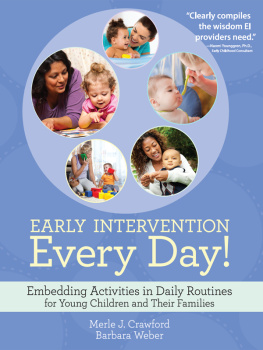

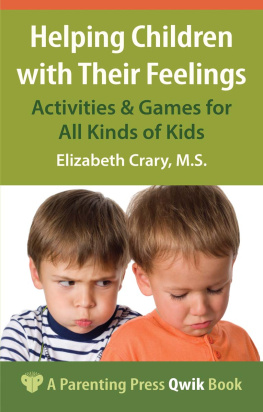
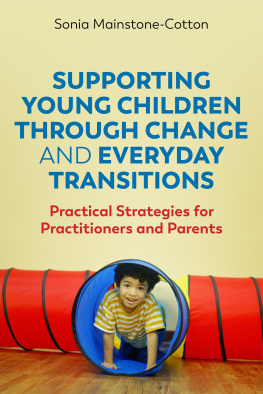
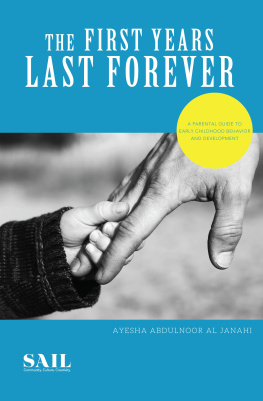
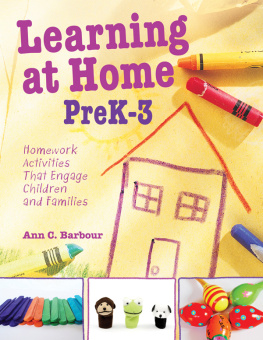
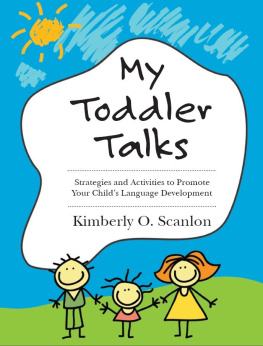
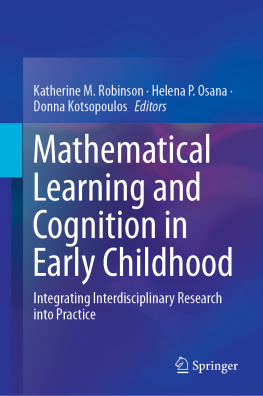


 Contents
Contents